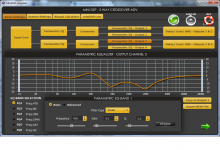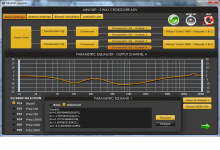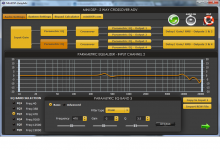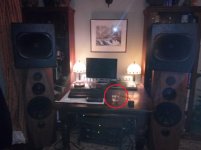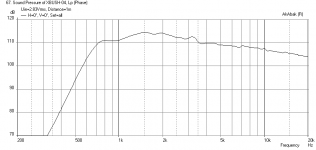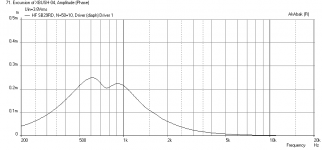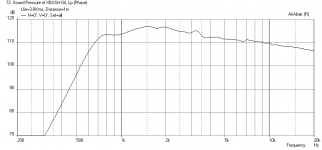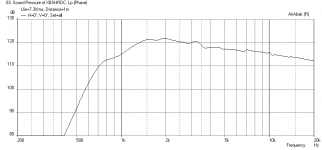Hello I am new of this forum, I would ask if anyone has tested Horn.ell.a software.
I would buy it to develop a special elliptic horn for hi-fi systems.
Sorry, never even heard of it. Do you have a link to where it is found/described?
I use Akabak and see no reason to try or learn another program at this point.
bushmeister,
Thanks for listening impressions it seems especially considering you have serious experience and reference speakers to compare with it sounds as your new build perform very well 😀 congratulation that and thanks sharing with us, there is really something to think about to go for a clone of your nice build.
Myself will find the time this week to start making adaptors and measure the P. Audio horns with F10/TC9/SB65 and share data here, if those horns won't be good when mounted a full ranger pretty sure my SB65 will end in a copy of your build.
Thanks for listening impressions it seems especially considering you have serious experience and reference speakers to compare with it sounds as your new build perform very well 😀 congratulation that and thanks sharing with us, there is really something to think about to go for a clone of your nice build.
Myself will find the time this week to start making adaptors and measure the P. Audio horns with F10/TC9/SB65 and share data here, if those horns won't be good when mounted a full ranger pretty sure my SB65 will end in a copy of your build.
So. I painted up the second speaker this evening. I have been listening in stereo for the last few hours.
I have got some pretty good DIY speakers to compare these to. I have the high end sealed three ways I made - with SB tweeter/12MU scanspeak mids and scanspeak woofers complemented with multi subs, a few single driver speakers, the WA prestige you can see in the picture above with very high end drivers and have had numerous shop bought 'Hi-Fi' speakers and studio monitors such as the Focal CMS....that is where I am coming from...
I have experienced high fidelity, and many times experienced the 'they are here' phenomenon - i.e. the band is in the room etc.
I have never before experienced to such a degree the 'I am there' feeling.
If you have the space for these speakers - I admit these are not 'bookshelf' speakers! - these are really something quite special.
Every recording I listen to, I can hear the venue, the recording process etc. etc. greater than ever before.
I don't know if it is the excellent phase, step response, controlled directivity - removing the room effects, low HD from 30 Hz right up, or the point source behavior of the synergy design, but these speakers are amazing.
If I listen to a recording made in a large space and close my eyes, I am there. The detail retrieval is amazing - I am comparing these things to the Volt VM752 domes and scanspeak 12MU mids directly...
I was only going to listen for 30 mins or so to get an idea of the sound, I am still here two hours later.
Seriously. I am blown away. I also am now seriously doubting the need for a sub cabinet. The bass is extraordinary.
OK I gotta get back to my albums. 😀
Glad to read it worked out this good. The "you are there" is definitely preferable to the "they are here" if you ask me.
Would you trust me if I said to you it would be worth it to do the sub cabinet?
I would also still encourage you to use 2 light coned, strong motor 12" drivers for each cabinet with enough x-max. Linkwitz transform to get their full potential and use of the floor boundary to maximise the performance.
There's just so much atmosphere in those lower notes, not as much heard but definitely noticed. (with all of your body) 😉 Get the timing right and they enforce the midrange like you won't believe.
Only after trying to limit my setup to ~35 Hz did I notice what I gave up. Obviously not on every song, but for those that have it it's worth it to enhance what you're experiencing now.
Think about it...
Ronald.
P.S. if it were my setup I'd even put 2 more on each above the horn, but I'm pretty crazy that way 😉
Last edited:
Would you trust me if I said to you it would be worth it to do the sub cabinet?
I would also still encourage you to use 2 light coned, strong motor 12" drivers for each cabinet with enough x-max. Linkwitz transform to get their full potential and use of the floor boundary to maximise the performance.
There's just so much atmosphere in those lower notes, not as much heard but definitely noticed. (with all of your body) 😉 Get the timing right and they enforce the midrange like you won't believe.
Only after trying to limit my setup to ~35 Hz did I notice what I gave up. Obviously not on every song, but for those that have it it's worth it to enhance what you're experiencing now.
Think about it...
Ronald.
P.S. if it were my setup I'd even put 2 more on each above the horn, but I'm pretty crazy that way 😉
LOL! Love it - my wife will leave me if I created 7 foot high monoliths with 4x 12" woofers per side!!!😀
However, I totally understand your sentiment - I know all about the lower octaves - my main system uses my sealed three way home cooked speakers with 4 distributed subs - loads of VD for excellent distributed bass down to 20hz.
You have seen the distortion measurements from one of these things - 100dB at 30 hz without breaking sweat - so with two running and room gain - I am not missing too much without any woofers! I have no high pass running on these at all - so bass goes right down below 30hz.
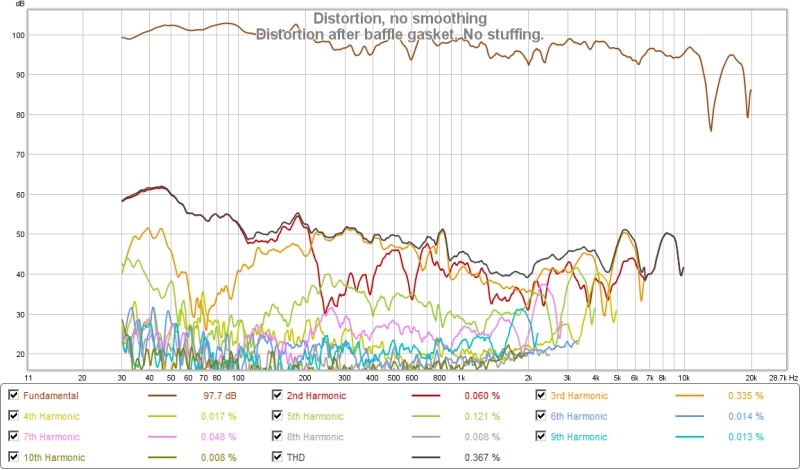
Still I hear what you are saying. I may yet build the giant monolith....
An externally hosted image should be here but it was not working when we last tested it.
Last edited:
For those considering another variation of a bookshelf type synergy, I submit a very interesting dome tweeter from SBAcoustics that can be crossed incredibly low
SBAcoustics-tweeters
See the last two images for distortion measurements. And that's on a flat baffle. Once the driver is loaded and boosted then the response shaped, the distortion tail will extend another quarter octave or so. The phase shield might be just what the doctor ordered.
SBAcoustics-tweeters
See the last two images for distortion measurements. And that's on a flat baffle. Once the driver is loaded and boosted then the response shaped, the distortion tail will extend another quarter octave or so. The phase shield might be just what the doctor ordered.
Thanks for the sims!
Here is a screen shot of the EQ applied for the woofers.
Thanks for the screenshot that makes it much clearer. Do you have a 2.83V or 1 watt measurement with all the EQ applied?
I got the SB26ADC-000-4 and installed them in the baffle not 1 hour ago as a replacement for the ND25FA-4. Going to measure them and build a crossover with rephase this afternoon.
I don't know how they'll do in a waveguide, the phase shield might cause some weird reflections.
I still haven't found a cheapo horn to play with (saving up for the 5" satori) but if I do I'll be glad to try the SB26ADC-000-4 in it.
I don't know how they'll do in a waveguide, the phase shield might cause some weird reflections.
I still haven't found a cheapo horn to play with (saving up for the 5" satori) but if I do I'll be glad to try the SB26ADC-000-4 in it.
LOL! Love it - my wife will leave me if I created 7 foot high monoliths with 4x 12" woofers per side!!!😀
However, I totally understand your sentiment - I know all about the lower octaves - my main system uses my sealed three way home cooked speakers with 4 distributed subs - loads of VD for excellent distributed bass down to 20hz.
You have seen the distortion measurements from one of these things - 100dB at 30 hz without breaking sweat - so with two running and room gain - I am not missing too much without any woofers! I have no high pass running on these at all - so bass goes right down below 30hz.

It's not the lack of confidence in your output that made me type that, it's the general idea of using more cone area so they each have to move less 😉.
Looking at the plots you posted a few pages back I'd love to see you do an APL_TDA plot at the listening position to show the timing. If you're up for it and run digitally, how about using some FIR correction? 😀
Last edited:
It's not the lack of confidence in your output that made me type that, it's the general idea of using more cone area so they each have to move less 😉.
Looking at the plots you posted a few pages back I'd love to see you do an APL_TDA plot at the listening position to show the timing. If you're up for it and run digitally, how about using some FIR correction? 😀
Not sure the moving less matters if HD is low anyway, some of the best measured subs have massive x-max.
Regarding FIR correction - I wouldn't know where to start! So you would have to be my guide in this. Is the software free?? If it isn't too difficult/time consuming I would be up for it.
But to be honest I feel like first I just need a few weeks listening to these things. They are incredible and I haven't stopped to breath making them over the last 5 weeks with every spare moment I have. I need to spend some evenings with a glass of single malt and some of my favorite albums rather than in the garage with ply and power tools!
Thanks for the screenshot that makes it much clearer. Do you have a 2.83V or 1 watt measurement with all the EQ applied?
Here are some screenshots of my EQ strategy. I did it all manually via importing the FRD files into PCD and massaging the EQ and XO in simulation and then manually hand typing the EQ and XO settings into miniDSP, followed by just a few very small adjustments by eye on top of that.
RS180P-8 woofers:
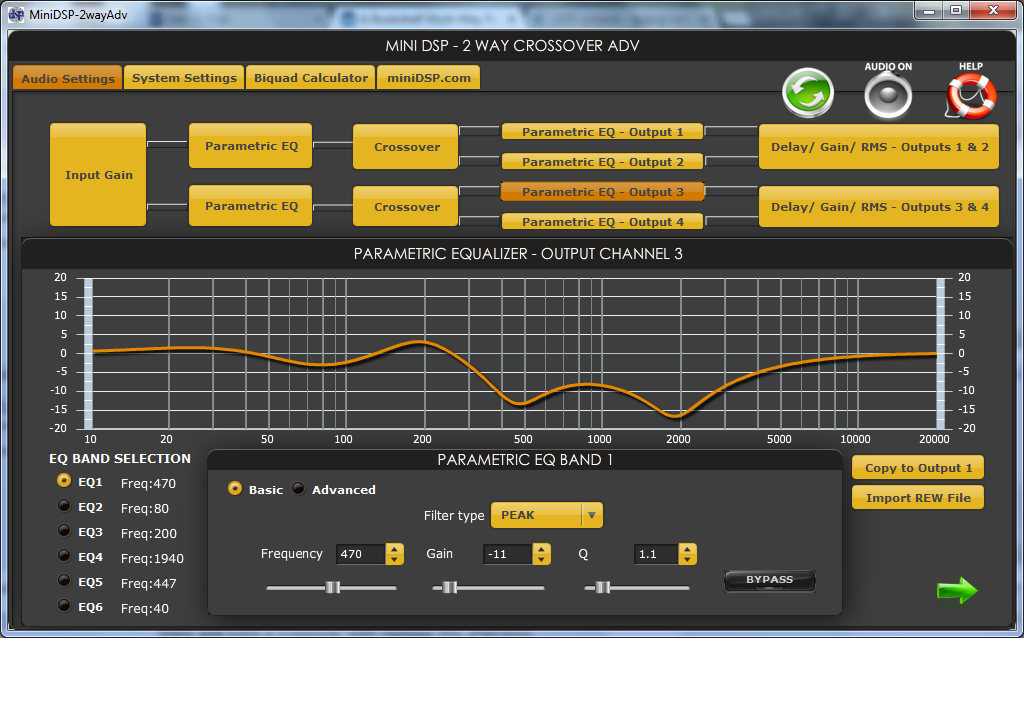
SB65WBAC25-4:
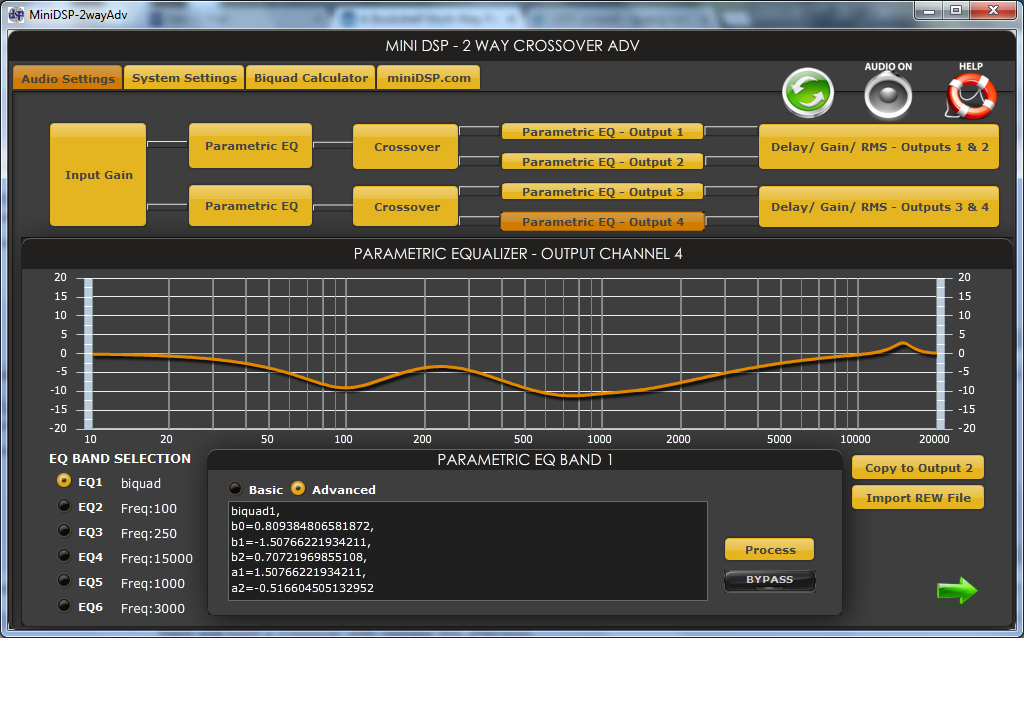
Overall applied to both:
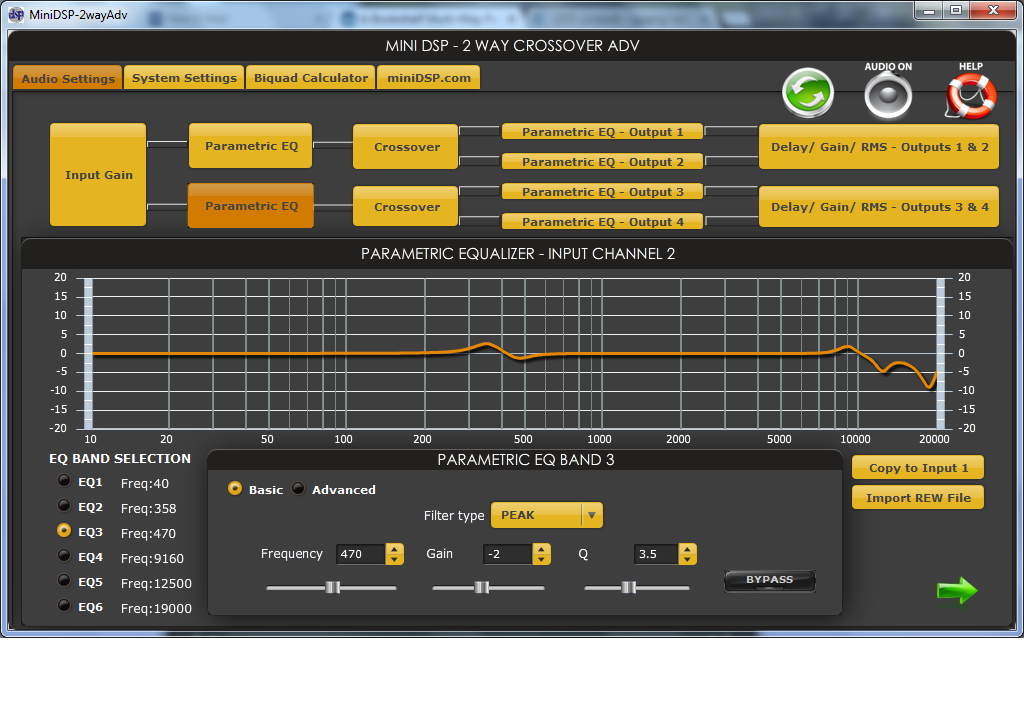
Attachments
Last edited:
For those considering another variation of a bookshelf type synergy, I submit a very interesting dome tweeter from SBAcoustics that can be crossed incredibly low
SBAcoustics-tweeters
See the last two images for distortion measurements. And that's on a flat baffle. Once the driver is loaded and boosted then the response shaped, the distortion tail will extend another quarter octave or so. The phase shield might be just what the doctor ordered.
Thanks for pointing that out. The distortion at 500Hz and 90dB was -30dB which is pretty respectable, so this may indeed work well. One thing to keep in mind is that the SB65 has about 2.75mm of xmax though, and an Sd which is much larger. So it can really push some air relative to the the little 1in dia ring radiator, which may work just fine - I will have to put it into the sim. The sim was pretty spot-on in predicting the low extension and max SPL peak of the SB65 in the WG.
Here are TS for the SB29RDC:
An externally hosted image should be here but it was not working when we last tested it.
and SB26ADC:
An externally hosted image should be here but it was not working when we last tested it.
But to be honest I feel like first I just need a few weeks listening to these things. They are incredible and I haven't stopped to breath making them over the last 5 weeks with every spare moment I have. I need to spend some evenings with a glass of single malt and some of my favorite albums rather than in the garage with ply and power tools!
You deserve a listening break, man. And I think you already started with the single malt, lights dimmed, leaning back on your favorite chair, eyes closed, music remote in hand... 😀
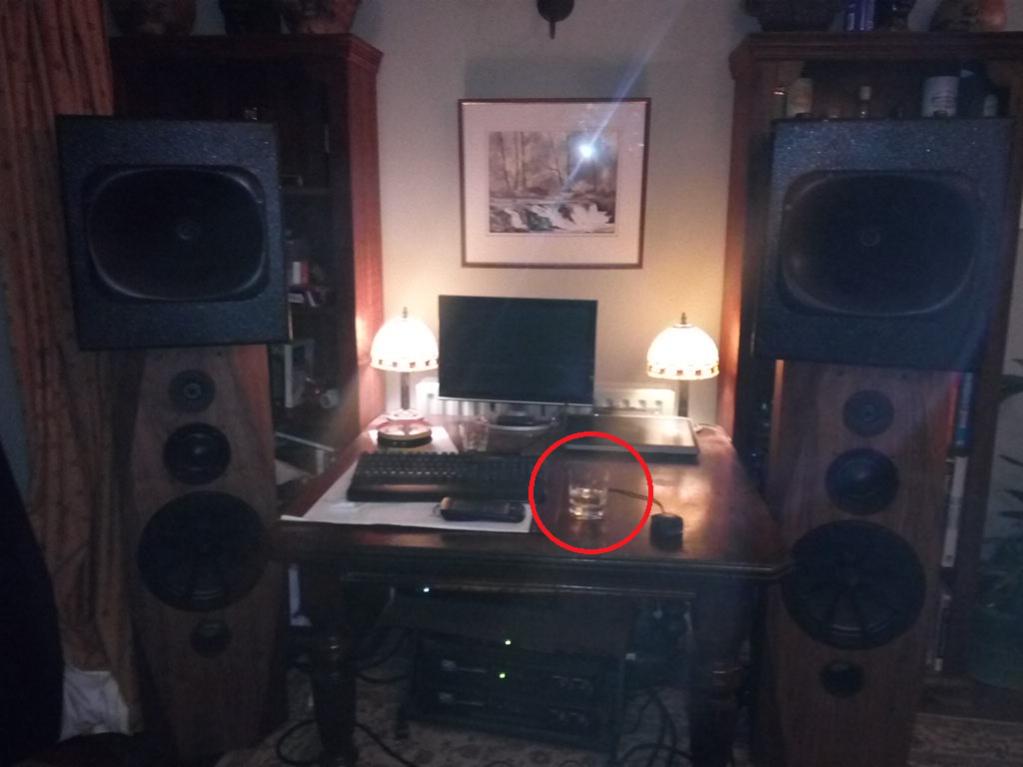
Attachments
And I think you already started with the single malt, lights dimmed, leaning back on your favorite chair, eyes closed, music remote in hand...
You got me! 😀😀😀
I forgot to mention... the significant other's voice in the background saying, "are you coming to bed yet, it's really late and you have to work tomorrow!" 🙂
I forgot to mention... the significant other's voice in the background saying, "are you coming to bed yet, it's really late and you have to work tomorrow!" 🙂
My god man, were you there?
Thanks for pointing that out. The distortion at 500Hz and 90dB was -30dB which is pretty respectable, so this may indeed work well. One thing to keep in mind is that the SB65 has about 2.75mm of xmax though, and an Sd which is much larger. So it can really push some air relative to the the little 1in dia ring radiator, which may work just fine - I will have to put it into the sim. The sim was pretty spot-on in predicting the low extension and max SPL peak of the SB65 in the WG.
Here are TS for the SB29RDC:
An externally hosted image should be here but it was not working when we last tested it.
and SB26ADC:
An externally hosted image should be here but it was not working when we last tested it.
I don't consider the 26ADC for use down to 500hz, but maybe 1khz which would require the use of midwoofers and closer taps......just another variation to get this all down to size.
The nice thing about such as small radiator is the reduced beaming higher in frequency and uniform directivity as well as no breakup modes that will go a long ways towards improved SQ. The faceplate of the ADC can also be turned down a bit which would faciliitate a closer mounting of mids.
If the goal is a true compact system, this might just be the approach.
Not sure the moving less matters if HD is low anyway, some of the best measured subs have massive x-max.
Regarding FIR correction - I wouldn't know where to start! So you would have to be my guide in this. Is the software free?? If it isn't too difficult/time consuming I would be up for it.
But to be honest I feel like first I just need a few weeks listening to these things. They are incredible and I haven't stopped to breath making them over the last 5 weeks with every spare moment I have. I need to spend some evenings with a glass of single malt and some of my favorite albums rather than in the garage with ply and power tools!
You're absolutely right, just run em and enjoy them! Maybe make some measurements around the listening position to see how the bass is holding up off axis. That should give you enough information to know if you need more woofers.
Talk to me in a few weeks to look at FIR filters. I'm curious to seen if that can clean up the CSD plot.
I don't consider the 26ADC for use down to 500hz, but maybe 1khz which would require the use of midwoofers and closer taps......just another variation to get this all down to size.
The nice thing about such as small radiator is the reduced beaming higher in frequency and uniform directivity as well as no breakup modes that will go a long ways towards improved SQ. The faceplate of the ADC can also be turned down a bit which would faciliitate a closer mounting of mids.
If the goal is a true compact system, this might just be the approach.
Here is a sim of the SB29RDC in the 18Sound XT1464 waveguide with a 1in long conical adapter to go from the tweeter to the 1.4in throat. I am running a 600Hz BW2 high pass filter to reduce excursion with hopes of a 600Hz XO. I made some assumptions of the tweeter rear drive chamber volume and depth. It might be on the small side...
It looks like it can work down to about 665Hz (-3dB) and give a maximum SPL of 113dB at only 3.8volts drive. Beyond that and you hit xmax.
Here is 2.83v reference SPL vs Freq:
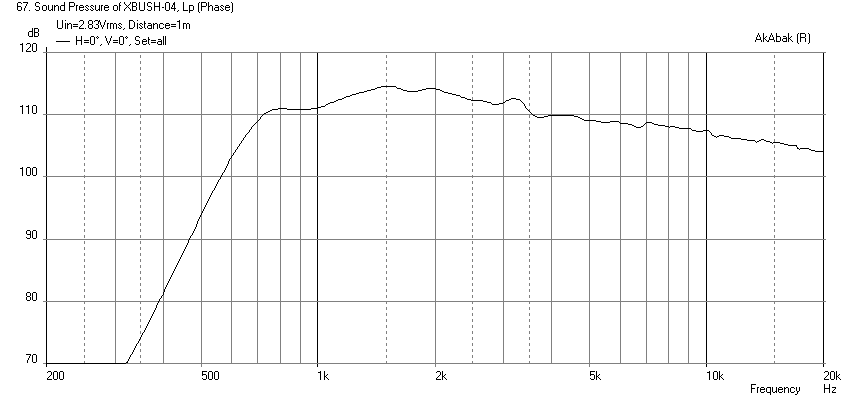
Here is membrane excursion at xmax (3.8v):
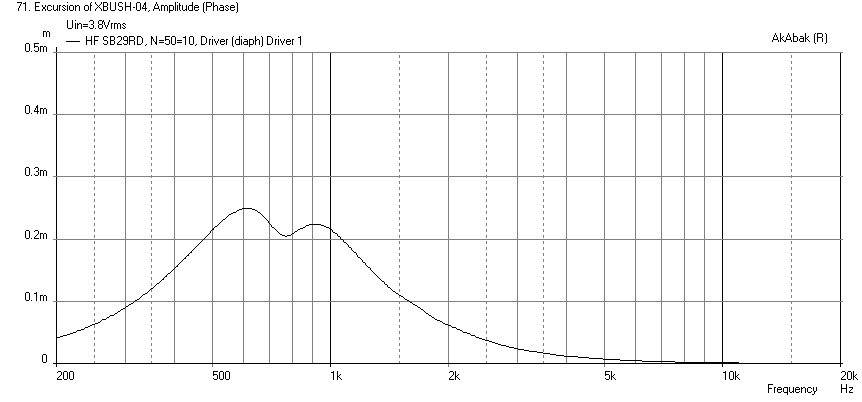
Here is SPL corresponding to xmax:
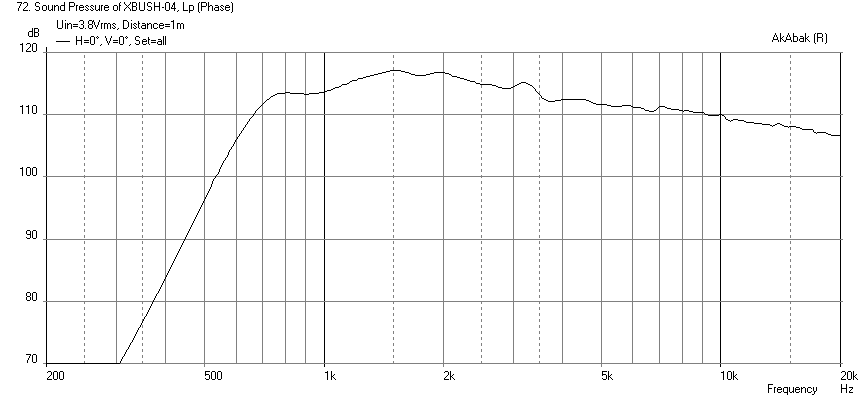
So I suppose, one could try this tweeter with a 670Hz XO and have some success - just be careful with amp power.
With a more conventional 1200Hz BW2 HPF, you can reach 120dB+ at 7.3v before hitting xmax. The WG is a great way to boost max SPL.
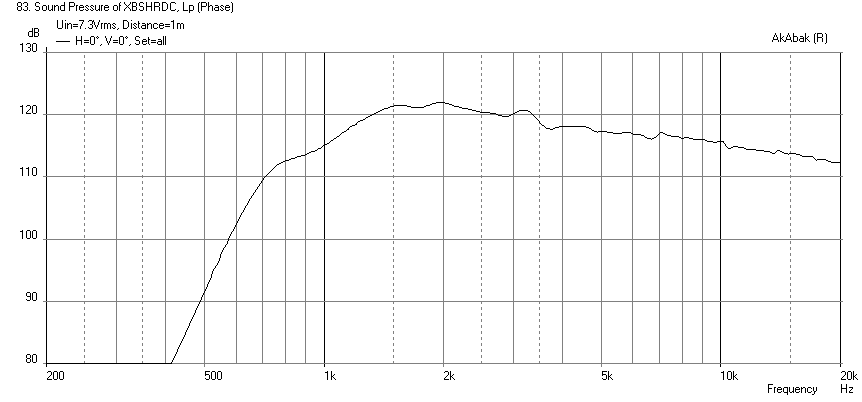
And with a 2000Hz BW4 HPF, you can drive it to 22v before hitting xmax for 129dB max SPL from 2khz on up (this is probably how most people would use this tweeter conventionally without a WG:
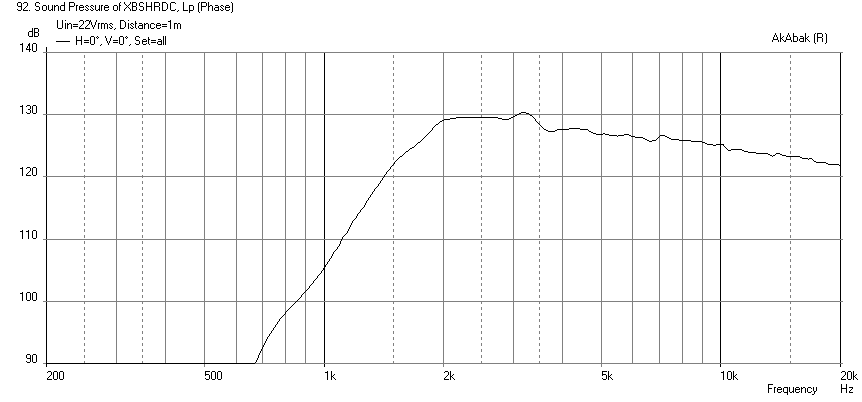
Attachments
Last edited:
- Home
- Loudspeakers
- Multi-Way
- A Bookshelf Multi-Way Point-Source Horn
